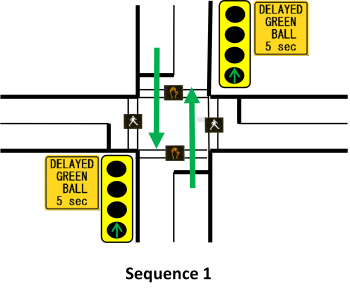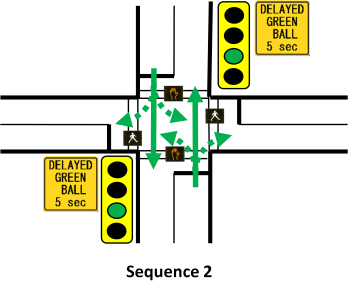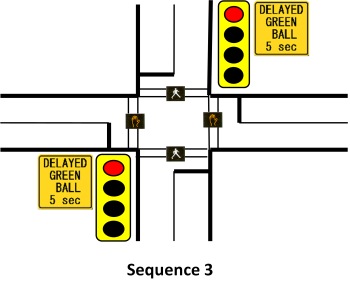
The Leading Pedestrian Interval (LPI), also known as Pedestrian Head Start Signal provides an advanced walk signal so that pedestrians begin to cross the street before vehicles get a green signal. The purpose of LPI is to increase the visibility of pedestrians in the intersection and reinforce their right-of-way over turning vehicles. The LPI is used to improve motorist yielding behaviour toward pedestrians in a crosswalk. The LPI is particularly helpful for older pedestrians, as they may take longer to occupy the crosswalk following the start of a “walk” indication, making them less obvious to turning motorists.
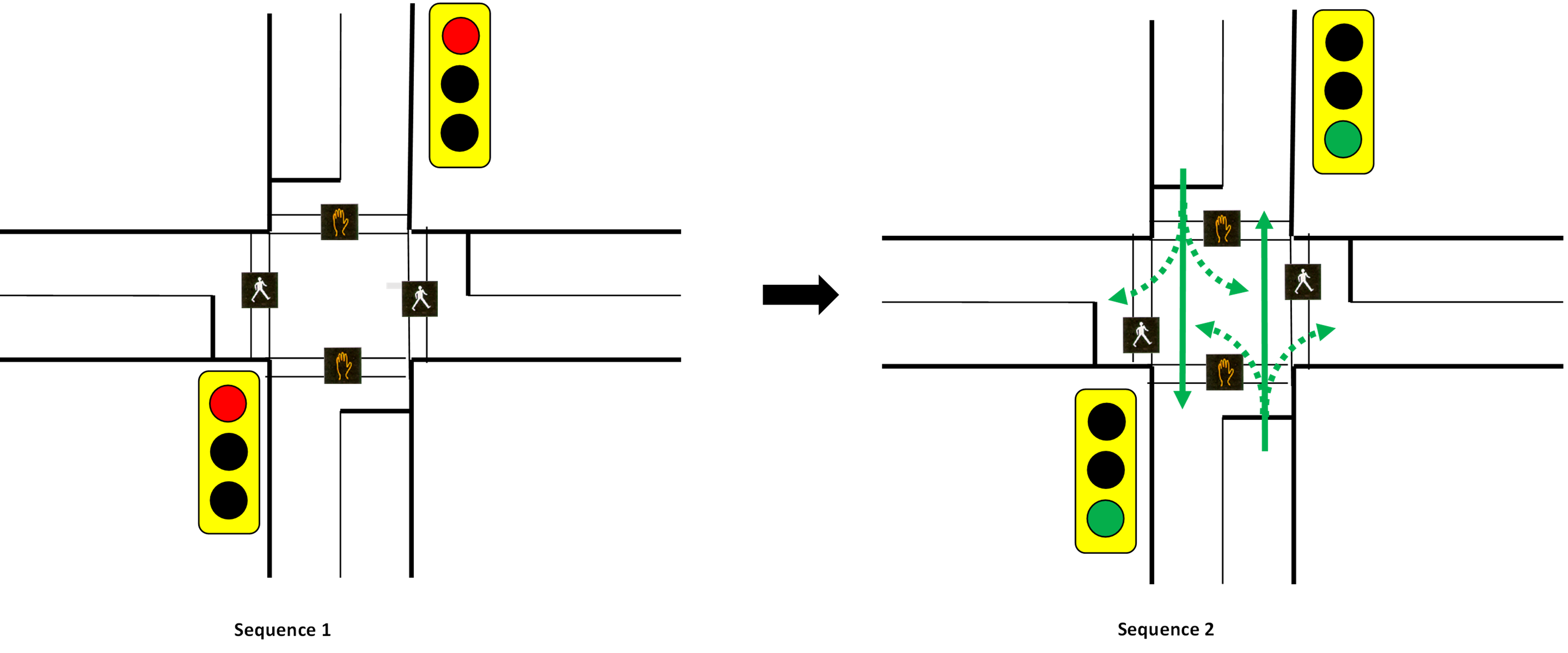
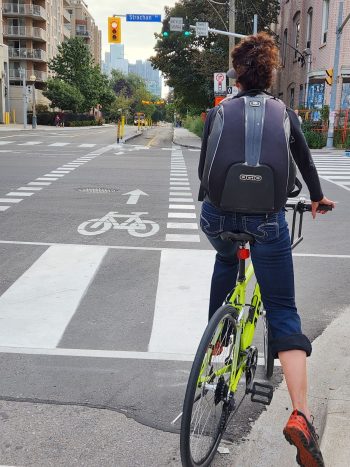 The Leading Bike Interval (LBI), also known as the Bicycle Head Start Signal, operates similarly to the Leading Pedestrian Interval (LPI). It provides people cycling with an advance head start, allowing them to begin riding before vehicles receive a green signal. The purpose of LBI is to enhance the visibility of people cycling in the intersection and reinforce their right-of-way over turning vehicles. LBI is used to improve motorist yielding behaviour towards people cycling at intersections. The LBI should only be installed at locations with exclusive bike lanes/bike cross rides, bicycle signal displays, and Leading Pedestrian Intervals (LPI). This ensures that pedestrians and people cycling have a corresponding head-start before the adjacent vehicular movement begins.
The Leading Bike Interval (LBI), also known as the Bicycle Head Start Signal, operates similarly to the Leading Pedestrian Interval (LPI). It provides people cycling with an advance head start, allowing them to begin riding before vehicles receive a green signal. The purpose of LBI is to enhance the visibility of people cycling in the intersection and reinforce their right-of-way over turning vehicles. LBI is used to improve motorist yielding behaviour towards people cycling at intersections. The LBI should only be installed at locations with exclusive bike lanes/bike cross rides, bicycle signal displays, and Leading Pedestrian Intervals (LPI). This ensures that pedestrians and people cycling have a corresponding head-start before the adjacent vehicular movement begins.
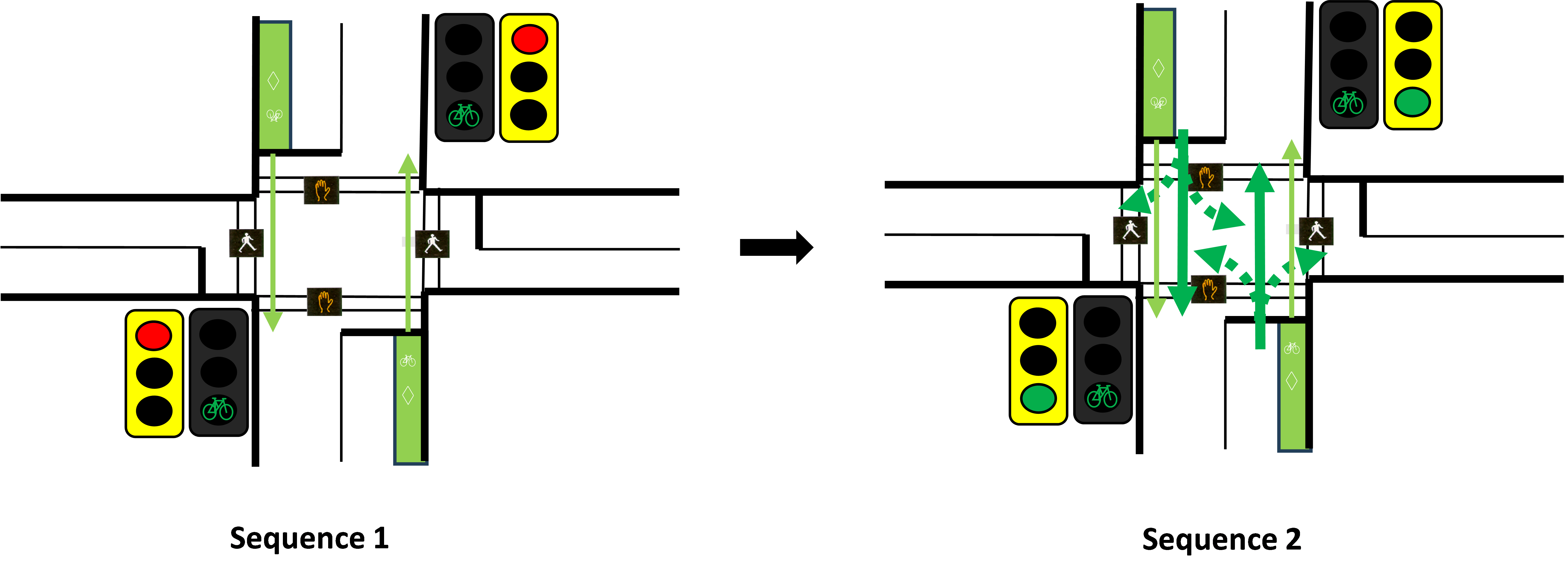
The Leading Through Interval (LTI) is a short interval (five seconds) at the start of a signal phase to allow vehicles to proceed through the intersection, while holding back left or right turning traffic. The intent for installing LTI is to lessen the negative effect on capacity due to the leading pedestrian interval (LPI).
During the LTI, through traffic faces a straight through green arrow and pedestrians face a “walk” display (Sequence 1).
After the five seconds LTI, the straight through green arrow is replaced with a green ball (Sequence 2).
At the onset of the green ball, right turn and left turn traffic can proceed. Following the green ball, the signal phase will terminate and the cross street phase will be served (Sequence 3).
